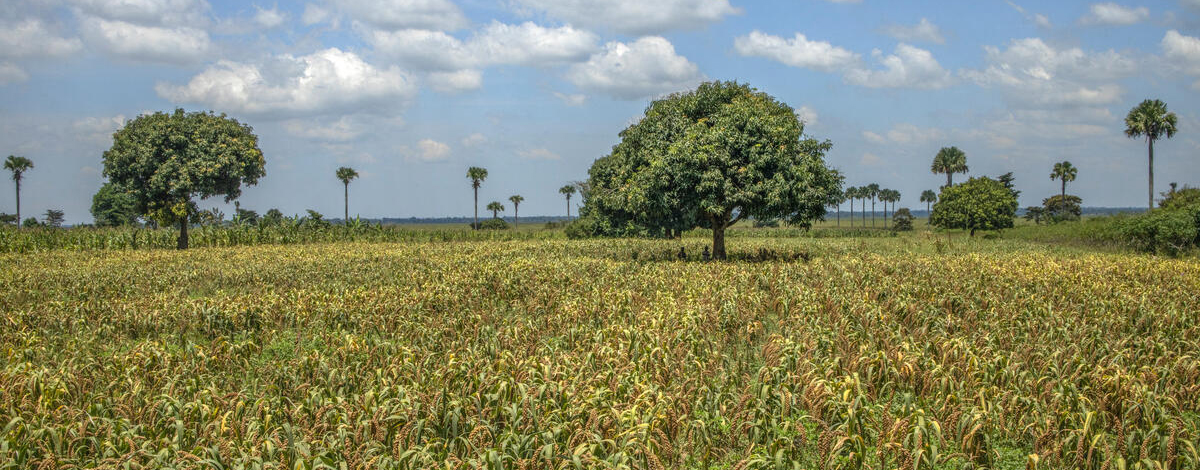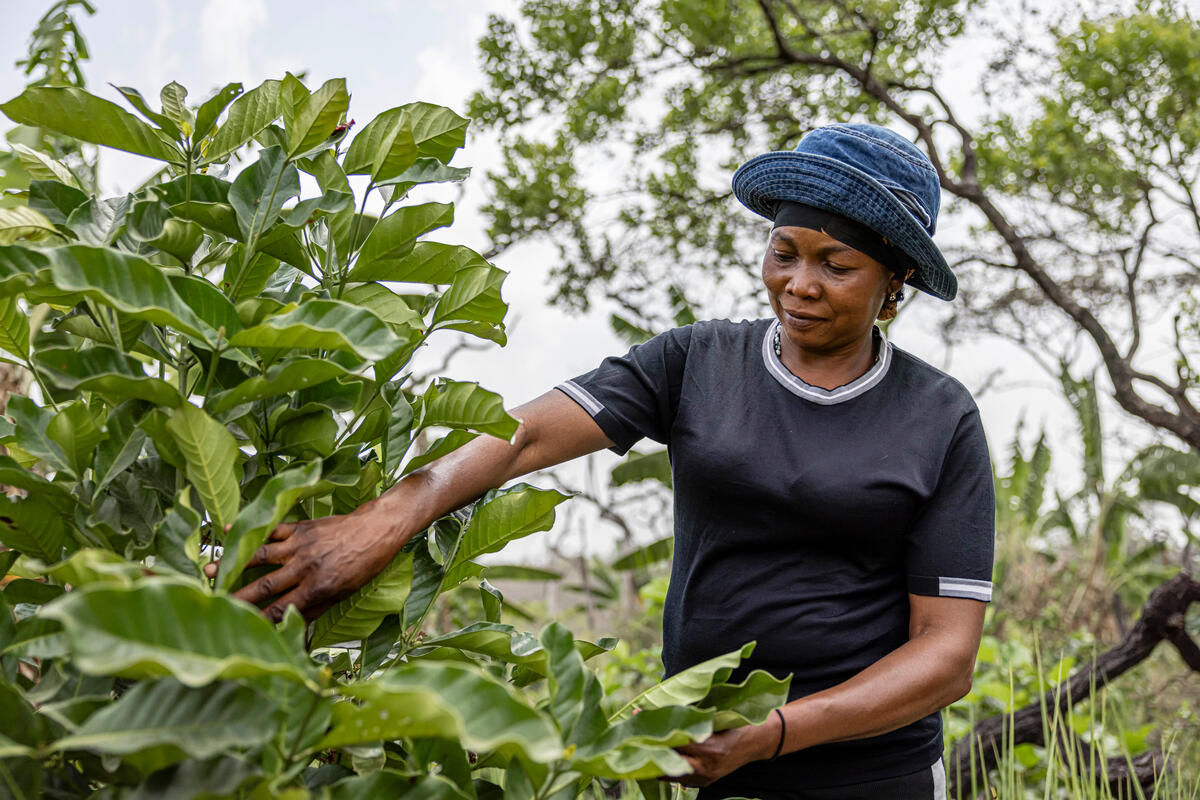
Crops and trees – allies for plant health and One Health
What happens when trees and crops grow on the same land? How do trees on farms – or at the edges of fields – help shape healthier communities and ecosystems?
Around the world, crops and trees work as partners, creating systems that protect plant health, supporting healthy soils, and the well-being of people, animals, and the environment.
How trees and crops strengthen each other
When trees and crops are grown together intentionally - in systems known as agroforestry – the benefits go beyond what either could achieve alone. One of the benefits trees provide is improving soil fertility by cycling nutrients. In parts of Africa, for example, Faidherbia and Gliricidia trees can fix nitrogen, which is also present in their leaves. When these trees shed their leaves, just as crops like maize and sorghum begin to grow, it boosts microbial activity and improves overall soil health. This can reduce the need for chemical fertilizers, helping protect rivers and drinking water from contamination. The crops respond with stronger growth, supporting the food security and nutrition of local communities.
Trees protect the land by holding the soil in place with their deep roots. This prevents erosion - when fertile topsoil is blown or washed away – helps the ground soak up rainwater and protects soil structure. The shade from trees creates a cooler environment for crops and farmers, reducing heat stress and water loss. For example, in India, native trees in agroforestry systems can help vegetables like tomatoes and leafy greens to thrive during extreme heat.
From Kenya to Mexico, FAO’s farmer field schools have helped communities design and manage these systems, building local skills to protect plant and soil health, and improve resilience to harsh conditions.
Crops also play their part in supporting trees. Low-growing crops like beans and groundnuts help keep moisture in the soil, which supports tree growth and the wider ecosystem. Crop residues add organic matter that nourishes trees and feeds soil microorganisms, including beneficial fungi, like mycorrhizal, that link to tree roots and help them draw water and nutrients efficiently. In Indonesia’s home gardens, farmers use crop residues to make compost, enriching the soil for nearby fruit and nut trees.
Agroforestry can also provide a natural barrier against pests. Farmers planting living fences of trees and shrubs can shield crops from plant pests. These barriers can reduce pest spread and lower the risk of outbreaks, protecting plant health while reducing reliance on chemical pesticides. The presence of trees also helps maintain pollinator habitats and natural enemies of pests, in line with integrated pest management.
A shared foundation for resilience and health
The partnership between trees and crops creates farming systems that can withstand climate shocks and protect life in many ways.
For people, these systems mean more varied and reliable harvests, providing better nutrition and food security even during droughts or floods. Trees not only support crops but also by providing nutrient-rich foods themselves - fruits, nuts, seeds, and leaves that all add diversity to diets and help prevent malnutrition. Some common agroforestry species, such as moringa and neem, are multi-purpose, including having medicinal properties that further add to the potential health benefits of these systems. In Latin America, trees like guava and papaya provide fruits rich in vitamins, while mango and avocado trees in home gardens supply essential energy and nutrients. FAO has supported smallholders in experimenting with agroforestry approaches that enhance food security while restoring degraded land.
Animals also benefit in multiple ways. When trees are part of pastures – also known as silvopastoral systems – they provide shade that reduces heat stress in livestock, helping to lower the risk of disease and improve animal welfare. The leaves, pods, and fruits of many tree species offer valuable feed that supplements grass and enhances animal nutrition. In parts of Southeast Asia, for instance, cattle graze under coconut trees, on fallen leaves and fruit husks, which helps reduce feed costs and supports healthier herds. By reducing animal stress and improving diets, these systems can also lower the risk of infections that spread between animals and people.
.jpg?sfvrsn=77b79fb9_0)

Agroforestry supports environmental health by helping restore degraded land, reduce erosion, and support biodiversity. In fact, agroforestry systems can reach 50 to 80 percent of the biodiversity of natural forests. Trees act as carbon sinks, storing carbon in their trunks, branches, and roots, and slowing the build-up of greenhouse gases that drive climate change. Their roots and fallen leaves help water soak into the soil, which reduces the risk of floods and helps maintain underground water supplies. By reducing the need for supplies of fuelwood or timber from natural forests, agroforestry systems help safeguard wildlife habitats and broader climate stability. These environmental benefits in turn support the health of communities that depend on natural resources for food, water, and livelihoods.
When trees and crops work together, they create more than a productive farm. They strengthen plant health and create benefits that extend to people, animals and the environment.
Overcoming barriers to wider adoption
Realizing this potential requires a multidisciplinary approach and comprehensive extension services. Farmers need guidance and support to know how to integrate trees, crops, and animals effectively. Shifting to agroforestry can be costly and time‑consuming, with many benefits from trees taking longer to materialize than short‑rotation crops, and new skills needed to manage these systems. Secure access to land and quality inputs – seeds, seedlings, tools - and reliable technical assistance, policy incentives and financing remain limited for many farmers.
With the right support, these systems hold great promise for building a healthier, more resilient future.
To overcome these barriers to agroforestry, FAO is working with countries, farmers and other stakeholders by focusing on three priorities: promoting agroforestry as a sustainable production system, improving monitoring, and supporting national agroforestry policies and strategies.
Through knowledge sharing, targeted projects and capacity‑building, FAO drives the adoption of intentionally designed agroforestry systems that are both economically viable and environmentally sustainable.
